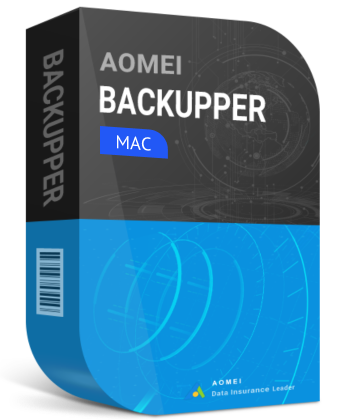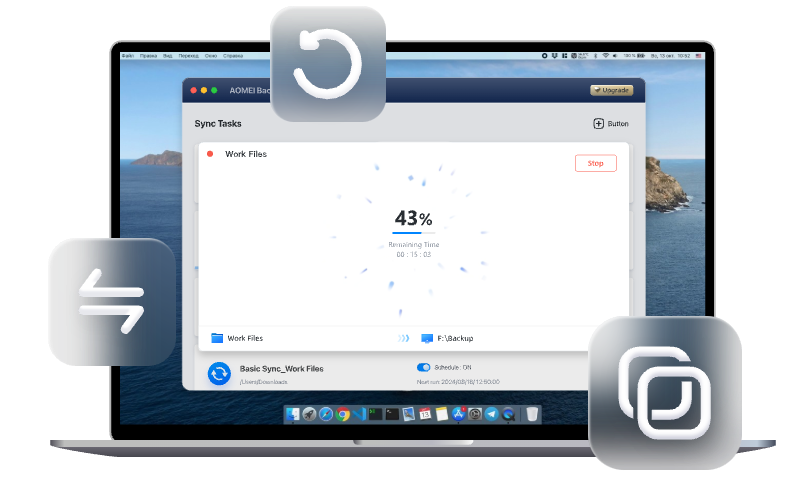Files Disappeared from Flash Drive on Mac: Top 5 Solutions
Trying to access files from flash drive on Mac but only find the files are gone? Don’t worry! This article will analyze causes and provide top solutions.
User case: files disappeared from flash drive on Mac
“Hey folks,
I've got a MacBook Air (2020) running the latest macOS, and my files just disappeared from my flash drive outta nowhere! I was transferring some photos and documents, then boom – everything's gone. The drive shows up, but it's empty. Tried different USB ports, but no luck. Anyone else run into this? How do I get my files back? Any help would be awesome!”
– Apple Community
You never know when you will encounter a USB flash drive failure. If you find files disappeared from flash drive on Mac, the following reasons may account for this:
- Mistakenly Deleted Files: Users might accidentally delete files from their flash drive, especially when trying to free up space or organize their data.
- Data Corruption Due to Improper Ejection: Removing the flash drive without properly ejecting it can lead to data corruption. This happens because macOS might still be writing data to the drive when it's removed.
- File System Errors: Over time, the file system on the flash drive can develop errors, especially with frequent use. These errors can cause files to become inaccessible or appear missing.
- Infection Causing Files to be Hidden or Deleted: Although macOS is generally secure, flash drives used across different operating systems can carry malware. This malware can hide files, make them invisible, or even delete them.
- Incompatibility with macOS Versions: Sometimes, the flash drive might not be fully compatible with the version of macOS you are using, leading to files not being displayed correctly.
- Formatting Issues: Flash drives formatted in file systems not fully supported by macOS (such as NTFS) might show issues in file visibility and accessibility. It's essential to use compatible file systems like FAT32 or exFAT for better compatibility.
How to fix files disappeared from flash drive on Mac
When you encounter files disappeared from flash drive on Mac, first restart your Mac and reconnect the flash drive to see if the problem is solved. If not, try one of the following solutions to fix it.
To backup files on USB flash drive to another location, please try the best free file sync software for Mac.
Solution 1: Check for hidden files
Sometimes, files may be hidden rather than deleted. To check for hidden files on your Mac, you can:
1. Open Terminal from the Applications > Utilities folder.
2. Type defaults write com.apple.finder AppleShowAllFiles TRUE and press Enter. It tells the Finder to display all files, regardless of how the hidden flag is set.
3. Type killall Finder and press Enter to relaunch Finder with hidden files visible.
Note: You may see your desktop disappear and reappear when you execute these commands; this is normal.
Solution 2: Repair flash drive with Disk Utility
Disk Utility can repair minor disk errors that might be causing file invisibility. Follow the steps below:
1. Open Disk Utility from the Applications > Utilities folder.
2. Select your flash drive from the sidebar and click on First Aid.
3. Click Run to check and repair the drive.
4. Click Done when the First Aid process finishes.
Solution 3: Check if the flash drive uses a supported file system
If the USB flash drive uses a file system that isn’t supported by your Mac, you can’t access the data on it. Use these steps to check your USB drive’s file system:
1. Launch Finder.
2. Find the USB drive on the sidebar. Press the Control key and click the drive for a drop-down menu to appear.
3. Click Get Info. Next to Format, you’ll see the file system type used by the USB drive.
Note: The file systems supported by macOS are APFS, Mac OS Extended, MS-DOS (FAT), and exFAT. So if the USB drive uses a different file system, you should reformat the drive with a supported file system.
Solution 4: Restore files from Time Machine backup
If you regularly back up your data using Time Machine, you can restore missing files from a backup. Here’s how to do it:
1. Connect your Time Machine backup drive.
2. Enter Time Machine via the menu bar shortcut.
3. Navigate to the date and time when the files were present and restore them.
Solution 5: Recover files with data recovery software
If you haven’t made a backup before, you can resort to professional data recovery software to recover lost files. Disk Drillis known for its user-friendly interface and powerful recovery capabilities. Follow the instructions below to recover files from a corrupted USB driveusing Disk Drill:
1. Download and install Disk Drill USB Recovery Software for Mac.
2. Connect the USB device to your Mac computer and launch Disk Drill.
3. Select the USB flash drive from the app’s disk list.
4. Click the Search for lost data button to start scanning for deleted files.
5. If you want to preview the recoverable files while the app is still scanning your flash drive, click Review found items.
6. Choose the files you want to restore and click the Recover button.
7. Select a safe location to save the recovered data and click OK.
Bonus: Copy important files to another place as a backup
In addition to making a backup with Time Machine, you can also backup your important files with the best free Mac file sync software- AOMEI Backupper Mac. It offers all-around sync features to help you copy files from one location to another. So the next time you encounter files disappeared from Mac, you can simply copy missing files back.

-
You can sync files from source to destination with Basic Sync or Mirror Sync. You can also sync files both sides with Two-Way Sync.
-
You can select folders on the local disk, external hard drive, USB flash drive, network location or NAS device as the sync source or destination.
-
The program offers 5 schedule modes to help you sync folders automatically, including Once, Hourly, Daily, Weekly and Monthly.
-
It runs smoothly on macOS 14/13/12/11/10.15 and has a user-friendly interface.
Don’t hesitate to download AOMEI Backupper Mac and try it out! To sync folders on your USB flash drive using AOMEI Backupper, click New Task in the main interface. Then, choose sync type > select sync source/destination. Finally, click Sync to run the task.
To sum up
Throughout this article, we explored the various reasons why files disappeared from flash drive on Mac and provided detailed solutions for recovering those files. Actually, these solutions can also help you fix files disappeared from external hard drive on Mac.
If you need a copy software for Mac to help you with file backup, AOMEI Backupper Mac is an ideal choice. It enables you to sync Mac folders between various locations, including sync files between two Macs. Why not give it a shot?

